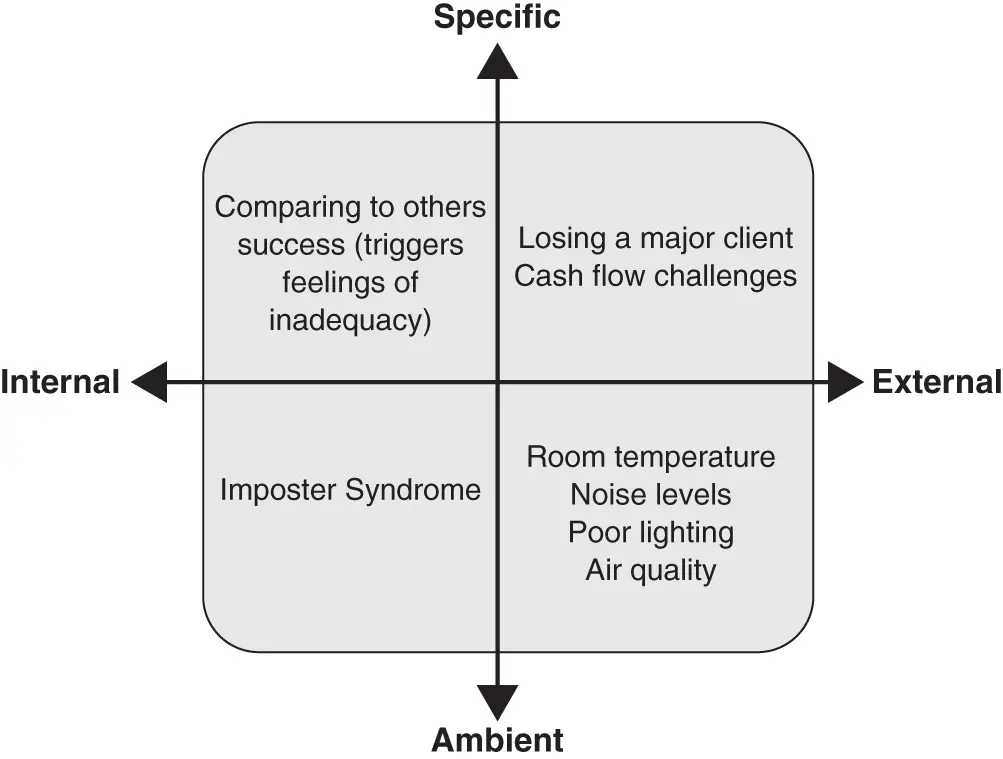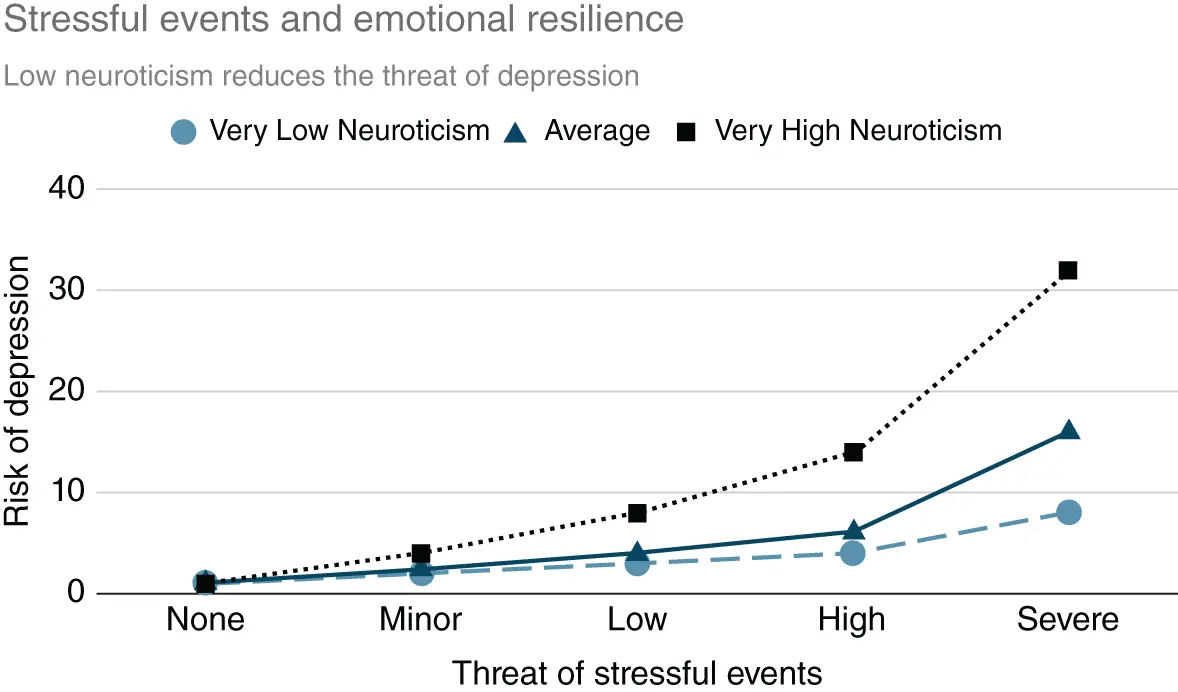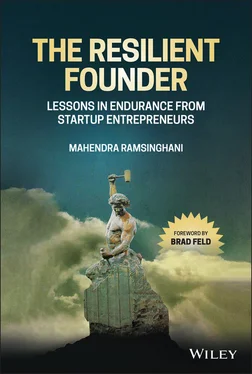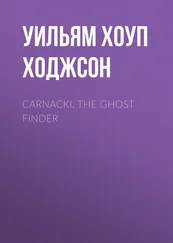
Figure 3-1 Four types of stressors.
Source: Modified from Miller and chipchase 2020

Source: Twitter, Inc.
Although it may not always be easy to identify the source of our misery, such a framework can be a good starting point.
The external ambient stressors, such as noise, lighting, or air quality may be addressed somewhat easily, but ones that rise on the inside – the internal ambient ones – might be much harder to tackle.
In other situations, our feelings give us a glimpse of our deeper challenges. A feeling of prolonged sadness might be interpreted differently. It could be a symptom of current external circumstances, circumstances in which you have abandoned your own well-being, productivity, or self-worth. Or you may find yourself unable to navigate the demanding routine of work. See Table 3.2.
HOW IS THIS THOUGHT HELPING ME?
External stressors will shake us up, for sure. Even going to a social event for founders can create inane conversational pressures. They will not even let you drink your soju in peace.
Table 3-2 Internal Feelings versus External Stressors
| Internal Feelings |
External Stressors |
| Sadness – prolonged and heavy |
My current circumstances are imposing a cost on me. My desire to seek fitness and well-being is compromised. |
| Loss of interest in all activities |
I do not see the value in doing this activity. I am unable to invest time and effort in anything. |
| Weight loss / gain, substance abuse |
I am unable or unwilling to invest in my own self. |
| Loss of sleep |
My daytime productivity is being traded-off as my cognition seeks a way out of the current crisis. |
| Anger, frustrations |
I am unable or unskilled to navigate my way out of the current crisis. My beliefs, thoughts, or skills are inhibiting me from reaching my goals. |
| Worthlessness, guilt |
My contributions are not valued. I am not delivering on my social contracts. Imposter syndrome. |
( Source: Table adapted from E. H. Hagen and K. L. Syme, The Oxford Handbook of Evolution and the Emotions, Laith Al-Shawaf and Todd Shackelford, eds.).

Source: Twitter, Inc.
They do not discriminate, and such is life. Yet, how we react matters. The situation may be the same, but those prone to strong emotional reactions can become far more susceptible to depression. The higher the degree to which a person experiences the world as distressing, threatening, and unsafe, the higher is the probability for a depressive episode. When we are subject to frequent fluctuations of our emotional state – anxiety, tension, and social-withdrawal – researchers term it as neuroticism. See Figure 3.2.
So how should we manage our inner states, and reduce the volatility of our emotions?
Dr. Lucy Hone, who lost her 12-year-old child suddenly, transformed her grief into studies on resilience. She describes one of the most powerful tools in building resilience is to ask,”hmmm … and how is this thought/feeling or action helping or hurting me at this moment?” 3
If our worldview is nonthreatening and safe, we have a four-time lower probability of experiencing a major depressive syndrome. If we see the world differently, change our perspective, maybe we can find solace. Selective attention (focus on things you can change, accept the loci of control, making gratitude lists, and so on) is another technique proposed by Dr. Lucy Hone. And finally, a time-tested technique in building resilience is acceptance. Stuff happens. In accepting our setbacks, changing our perspectives and working with thoughts that help, rather than those that hurt us, our start-up ride might be enjoyable.

Figure 3-2 Depression and stressful life events.
Source: K. S. Kendler, J. Kuhn, and C. A. Prescott, “The Interrelationship of Neuroticism, Sex, and Stressful Life Events in the Prediction of Episodes of Major Depression,” American Journal of Psychiatry 161, no. 4 (2004): 631–636.
Which means less misery.
For us.
And for those around us.
1 1.K. S. Kendler, L. M. Karkowski, and C. A. Prescott, “Causal Relationship Between Stressful Life Events and the Onset of Major Depression,” American Journal of Psychiatry 156, no. 6 (1999): 837.
2 2.Ryan Caldbeck, “Transitions,” October 15, 2020, https://ryancaldbeck.medium.com/transitions-fa7ce4af435.
3 3.Dr. Lucy Hone, “The Three Secrets of Resilient People,” TEDXChristchurch, September 25, 2019, https://www.youtube.com/watch?v=NWH8N-BvhAw.
Конец ознакомительного фрагмента.
Текст предоставлен ООО «ЛитРес».
Прочитайте эту книгу целиком, купив полную легальную версию на ЛитРес.
Безопасно оплатить книгу можно банковской картой Visa, MasterCard, Maestro, со счета мобильного телефона, с платежного терминала, в салоне МТС или Связной, через PayPal, WebMoney, Яндекс.Деньги, QIWI Кошелек, бонусными картами или другим удобным Вам способом.
















